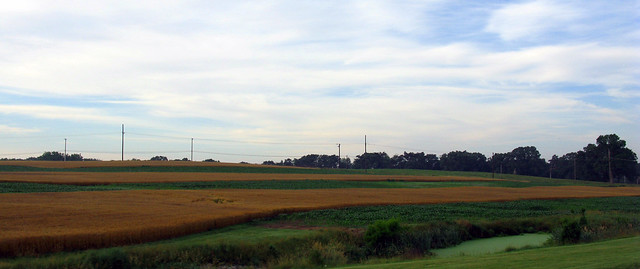
photo source
Conclusions of USDA's "Structure and Finances of U.S. Farms" 2010 Edition" by Robert A. Hoppe and David E. Banker
1. Large-scale family farms and nonfamily farms now account for about four-fifths of U.S. agricultural production. Million-dollar farms alone account for half of agricultural production. Yet, small farms make significant contributions to the production of specific commodities.
2. Farming is generally considered a purely rural pursuit. Nevertheless, two-fifths of U.S. farms and agricultural production are located in metro areas. High-value crops account for a large share of metro production, even outside the Fruitful Rim.
3. Large-scale family farms are generally viable economic businesses, with favorable financial ratios. Small family farms are less viable as businesses, but the households operating them receive substantial off-farm income and do not rely primarily on their farms for their livelihoods.
4. There are relatively few limited-resource farmers, regardless of the definition used. The number of limited-resource farmers, however, is sensitive to any farm asset or household wealth constraints imposed in the definitions.
5. Different types of farm program payments go to different types of farms. Most payments from commodity-related and working-land programs go to large-scale family farms because these programs target production (directly or indirectly). Land-retirement programs, in contrast, target environmentally sensitive land and go mostly to retirement, residential/lifestyle, and low-sales small farms.
Large-Scale Farms Produce the Most Output
Large-scale family farms reported 66 percent of the value of U.S. agricultural production in 2007, and nonfamily farms contributed another 18 percent of production. Million-dollar farms alone, numbering only 47,600, produced 53 percent of U.S. agricultural output in the same period and dominated the production of high-value crops, hogs, dairy, poultry, and beef.
The largest million-dollar farms—those with sales of at least $5 million in a given year—accounted for 35 to 45 percent of the production of high-value crops, beef cattle (largely in feedlots), and milk. The large share of these products produced by $5 million farms suggests economies of scale still exist even when sales exceed $5 million.
Nevertheless, small farms reported significant shares of production of specific commodities, including 23 percent of the value of production for cash grains and soybeans, 51 percent for hay, 34 percent for tobacco, and 22 percent for beef (largely from cow-calf operations). All these shares were larger than small farms’ overall 16-percent share of U.S. production.
source: usda [pdf]